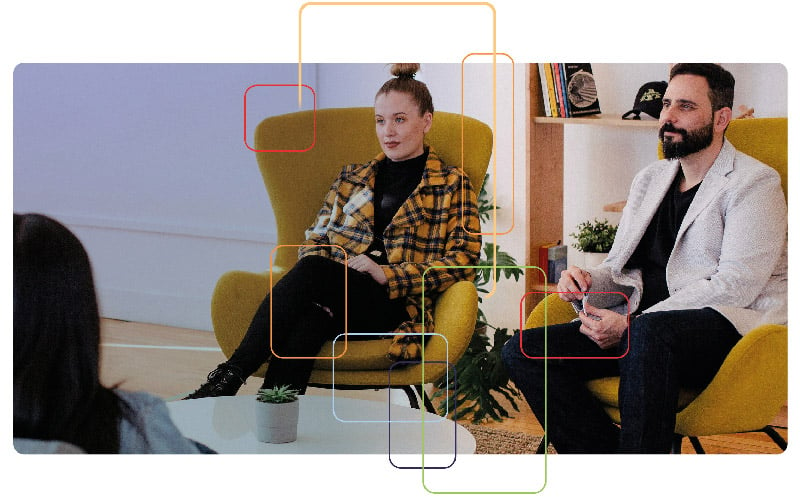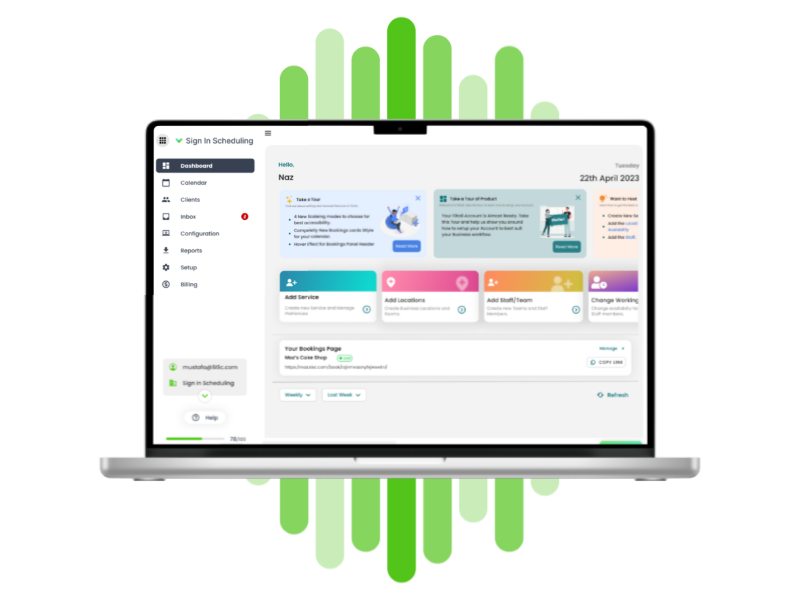Here at 10to8 we love data — but are statistics the final piece in the puzzle of patient...
Eight Curious Stats About Appointment No-Shows After COVID
Appointment no-shows are becoming the latest challenge for post-COIVD businesses. Although lockdowns are easing worldwide and countries are trying to get back to some kind of normality, there’s this new challenge that businesses have to face.
As people are returning to business-as-usual, there’s nothing “usual” about the number of appointment no-shows that service-based businesses have to put up with.
Missed appointments have always been a pressing problem for all service-based businesses but the global pandemic only made it worse. In fact, Treatwell reported that 33.7% of Beauty industry customers have missed a salon appointment at some point.
The hospitality industry is largely hit by last-minute cancellations and no-shows. So much so that restaurants often take reservation deposits, however, these fees still don’t make up for the over £16 billion each year that non-attendance costs UK venues alone.
We took a deep dive into our anonymized data to discover how no-show rates have changed in the last couple of months. When have missed appointments peaked? What are the differences between countries? And which industries have been most severely hit?
But before we get into the numbers, let’s take a step back to understand what no-shows are and how they are impacting service-based businesses.
In this article:
- What is a no-show
- What is the difference between no-shows and cancellations?
- Why are no-shows bad
- Facts about appointment no-shows after COVID
What is a no-show?
An appointment no-show is when a customer fails to turn up to the appointment that they had scheduled. Customers miss their bookings for one of three reasons:
- They simply forget about the booking;
- They fail to communicate a change of plans - for example, if they no longer need the appointment but fail to cancel it;
- And finally, something unexpected happens e.g. a double-booking, childcare situation, or having to care for an ill loved one.
To avoid missed appointments, many businesses implement appointment booking and reminder software to help clients remember upcoming bookings and have a convenient option to cancel or reschedule. The automated 10to8 reminders, for example, are proven to reduce no-shows by up to 90%.
What is the difference between no-shows and cancellations?
Although businesses often consider last-minute cancellations as no-shows, traditionally, an appointment no-show is when the customer doesn’t turn up at all to the booking, whereas a cancellation is when they give some notice that they will not attend.
Businesses often consider last-minute cancellations (an hour to 30 minutes prior to the appointment) no-shows as they are almost as difficult to act on and cause just as much harm as classic no-shows.
Businesses usually encourage timely cancellations in order to avoid no-shows. This way they can act on the freed-up time slot and attempt to re-book it, in order to avoid a costly empty slot.
Why are no-shows bad?
Appointment no-shows are terrible for service-based businesses. Often a missed appointment means no revenue and a service professional sitting idle - all cost and no revenue. Coping strategies like overbooking or queuing mean that businesses can’t efficiently allocate resources and no-shows rob businesses of engaging with the customer during an appointment. And finally, they can push other customers on a long waitlist due to the scarcity of available times.
Facts about appointment no-shows after COVID
Let’s look at some facts about how appointment no-shows have changed during the last couple of months. Our research looks at data gathered from 10to8 users. Please note that businesses without a reminder system will see up to 90% higher no-show rates.
A quick note on our data: 10to8 gathers aggregate and anonymous booking data from our business customers. No private individuals’ data is ever used – nor can it be accessed by our analysts. We can never see what appointments are for or any information on the staff or clients who have bookings. To gain further insight from our data we have visited the public websites of our clients to see what kind of bookings they take and how they are publicly changing what they do due to the coronavirus outbreak.
No-show fact #1: 5% more no-shows as lockdowns ease
The rate of no-shows has risen by 5% from the beginning of the year up to early August.
As many countries struggle with the health and political issues around COVID and businesses are trying to get back on their feet, the uncertainty damages consumer confidence. Individuals are confused by conflicting health messages and government regulations resulting in higher non-attendance rates. This is why it’s more important to communicate better with customers.
Looking at worldwide trends, the results are encouraging. Businesses are now scheduling far more appointments than during the depths of Coronavirus (March 2020).
[bctt tweet="The rate of no-shows has risen by 5% from the beginning of the year up to early August." username="10to8ltd"]
No-show fact #2: In the UK, customers are 18% less likely to no-show
Customers in the United Kingdom are already some of the most dependable in the world and became even more so during the pandemic. 10to8 users in the UK had further reduced non-attendance rates throughout and after the pandemic. British business schedules are busier and fuller - with 18% fewer no-shows on average. Some sectors, as we will see later, have been better off than others.
Lockdowns were longer and stricter in the United Kingdom than in the United States and UK businesses booked 25% fewer appointments, UK customers have been punctual, helping out British businesses that have struggled more than their US cousins across the pond.
[bctt tweet="British business schedules are busier and fuller - with 18% fewer no-shows on average." username="10to8ltd"]
No-show fact #3: Australia has seen a 39% increase in missed appointments
The land down under has seen a roughly 40% jump in no-show rates - which is similar to some other countries as coronavirus spread across the globe. As of writing, Australia’s pandemic peak is still yet to come and the unusually high no-show rates could be followed by a significant drop in overall bookings.
The table below shows the average non-attendance rates in Australia, Canada, the United Kingdom, and the United States. It compares the countries’ no-show rates to the global average index, and how they had changed between the pre-and-post COVID periods.
| No-show rate average | Compared to the global average | Impact COVID | |
| Australia | 1.1% | -27% | 39% |
| Canada | 0.8% | -45% | 0% |
| United Kingdom | 1.1% | -27% | -18% |
| United States | 2.1% | 39% | 8% |
Although American business owners were keen to reopen, their customers were not; businesses are seeing a higher missed appointment rate. As US coronavirus cases are soaring, we might see an increase in no-shows again. Will the rush to reopen and reanimate the US economy backfire and will a second wave of coronavirus result in another phase of fear and consumer no-shows?
No-show fact #4: 29% more no-shows in gyms and fitness studios
As gyms and fitness studios are reopening, they need to adhere to new regulations to provide safe spaces. These regulations create administrative costs and overheads at a time when gym memberships and revenue are falling.
Gym members are asked to stagger their arrival times so that changing rooms are not over-occupied before classes. Gyms are also introducing booking systems like 10to8 to optimize workout equipment utilization and social distancing in the studios. Customers might book time on the treadmill, elliptical, or in the weights section, ensuring social distancing and time to clean equipment between users.
This is, of course, something that takes much getting used to. This is probably why sports professionals have seen a 29% increase in appointment no-shows. Many personal trainers offered online sessions during the lockdown, however, now they are eager to switch back to the in-person workout and this switch might not be as seamless as they would have hoped.
With the new gym booking systems in place, however, they might get some useful insights into gym utilization and commitment, and can identify bottlenecks that fell between the cracks before.
No-show fact #5: Patient no-shows are 33% lower
Some great news for the much-exhausted healthcare system: patients are now taking their doctors’ appointments more seriously. Medical appointment no-shows have dropped by 33% compared to the all-time average.
Historically, the healthcare sector has had the worst no-show rate of any sector we’ve looked at. According to our data, health clinics suffer from a 3% no-show rate, although this percentage is much higher, around 19%, in practices that don’t use scheduling software.
In our previous research, we found that during peak lockdown medical bookings fall by 63% which left patients untreated and hospitals with a huge backlog of appointments they will need to catch up on. The encouraging 33% drop in missed appointments is a reassuring sign that the Medical sector might be able to catch a breath and recover from the COVID shock sooner.
Of course, the pandemic was a big wake-up call for healthcare systems worldwide and they needed to upgrade, improve, and automate in order to fight the virus. In the UK, for example, many medical practices implemented 10to8 to arrange outpatient bookings more efficiently. But we’ve also seen plenty of medical appointments moved online which resulted in the rapid growth of telemedical bookings. These types of sessions are quicker to carry out, harder to miss, and in many cases, can replace some of the traditional doctor’s appointments - we’ll see if they are here to stay...
No-show fact #6: 24% fewer no-shows in Education
The Education sector did a terrific job at moving online and our university partners managed to switch to a virtual setup in just two weeks after lockdown. Here’s our advice on how to sky-rocket student engagement in a remote setup.
It looks like virtual student engagement appointments and online classes are more favorable to students, as we have seen 24% fewer no-shows than at the same time last year.
As we’re getting closer to the new semester, many universities are planning ahead and designing a ‘hybrid’ setup with a mix of online and face-to-face classes.
No-show fact #7: 34% fewer no-shows in Retail
Non-essential retailers also turned to virtual queue management and booking systems, but unlike gyms, they managed to rid their shops of one-third of the no-shows compared to last year’s figures.
Booking before shopping is becoming commonplace, and customers are getting used to the new normal. Such actions also meant that shop owners can now better estimate the staff level needed at any given time, can gain useful insights into customer behavior, and moreover, ensure a safe and excellent shopping experience.
Download our retail reopening guide to learn how shops are successfully implementing a booking system.
[bctt tweet="Non-essential retailers also turned to virtual queue management and booking systems and they managed to rid their shops of one-third of the no-shows compared to last year’s figures." username="10to8ltd"]
Conclusion...
Appointment no-shows are harmful, pandemic or no pandemic. However, there are many solutions service-based businesses can turn to in order to eliminate missed bookings.
Setting up automated reminders, educating customers on the damage missed appointments and last-minute cancellations cause, and optimizing your scheduling process are just some of the quick fixes businesses can put in place.
Because we have almost a decade of experience in eliminating appointment no-shows, we created a vast resource library with more research on the topic, FAQs, reminder templates, social media designs, and more.
Find all our no-show resources here.






Blog comments